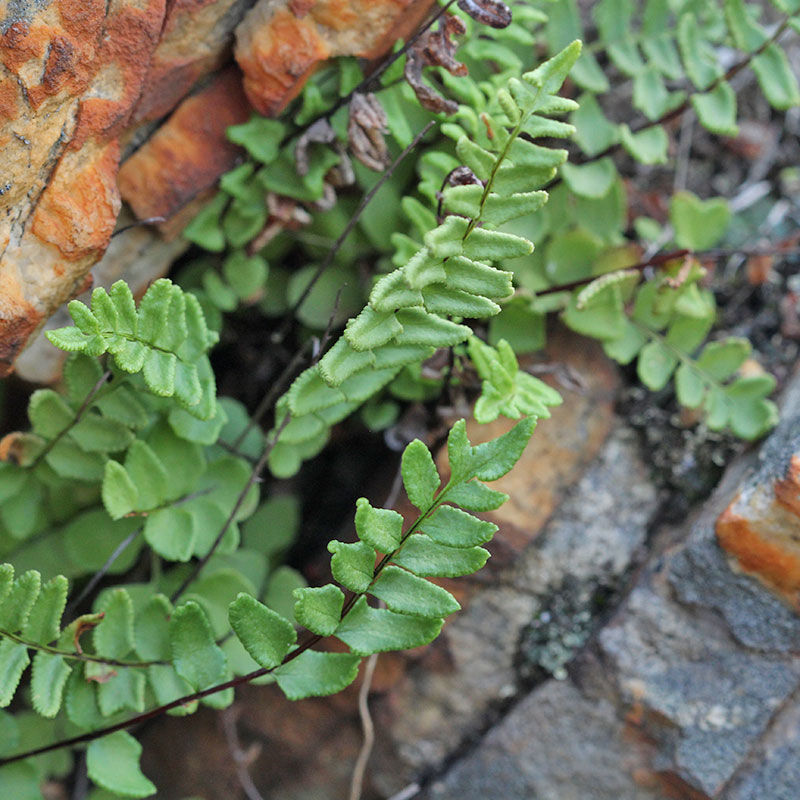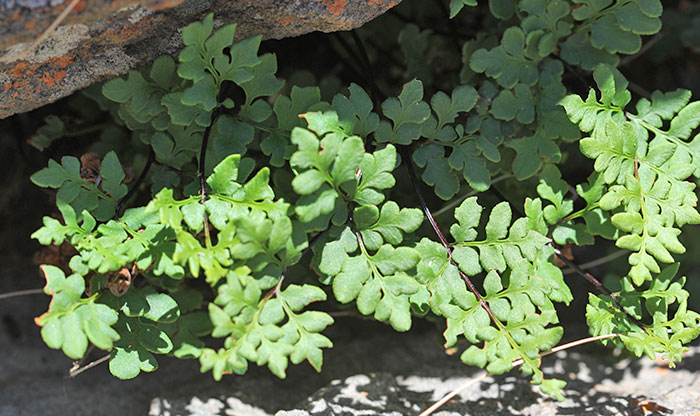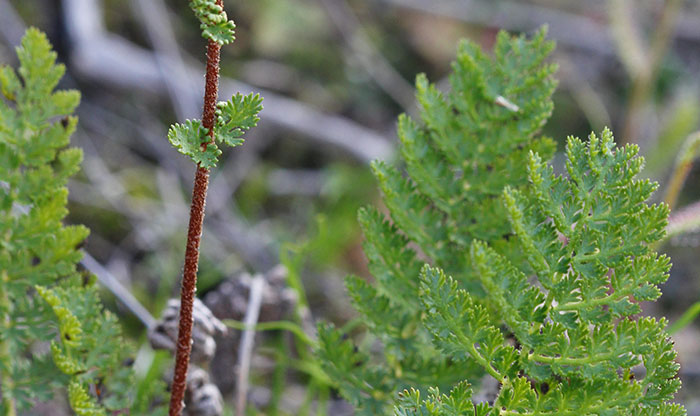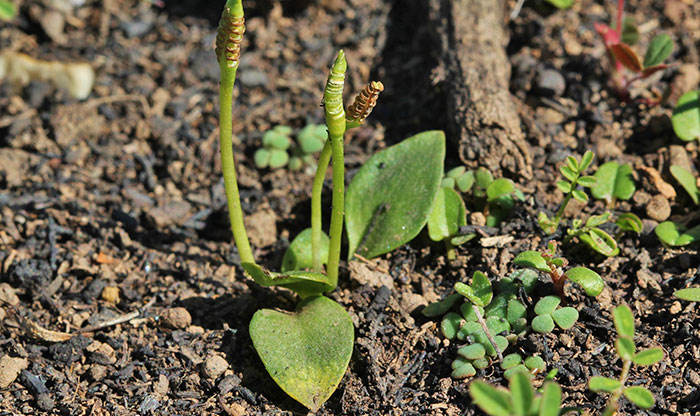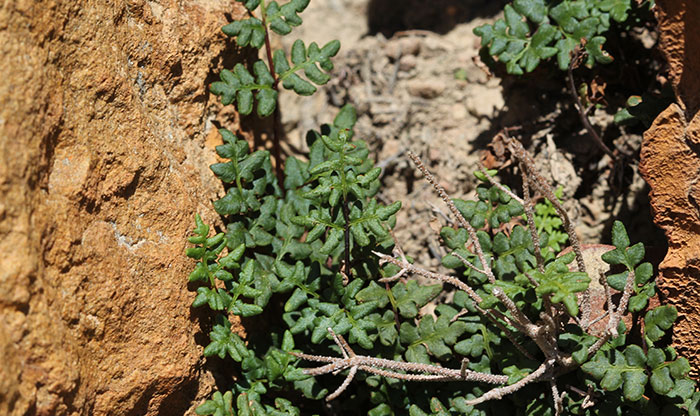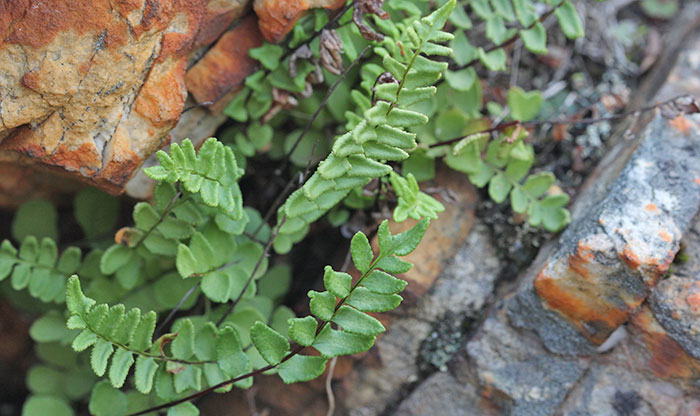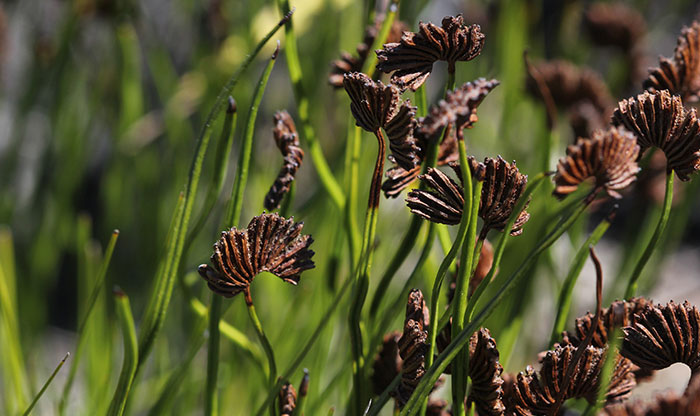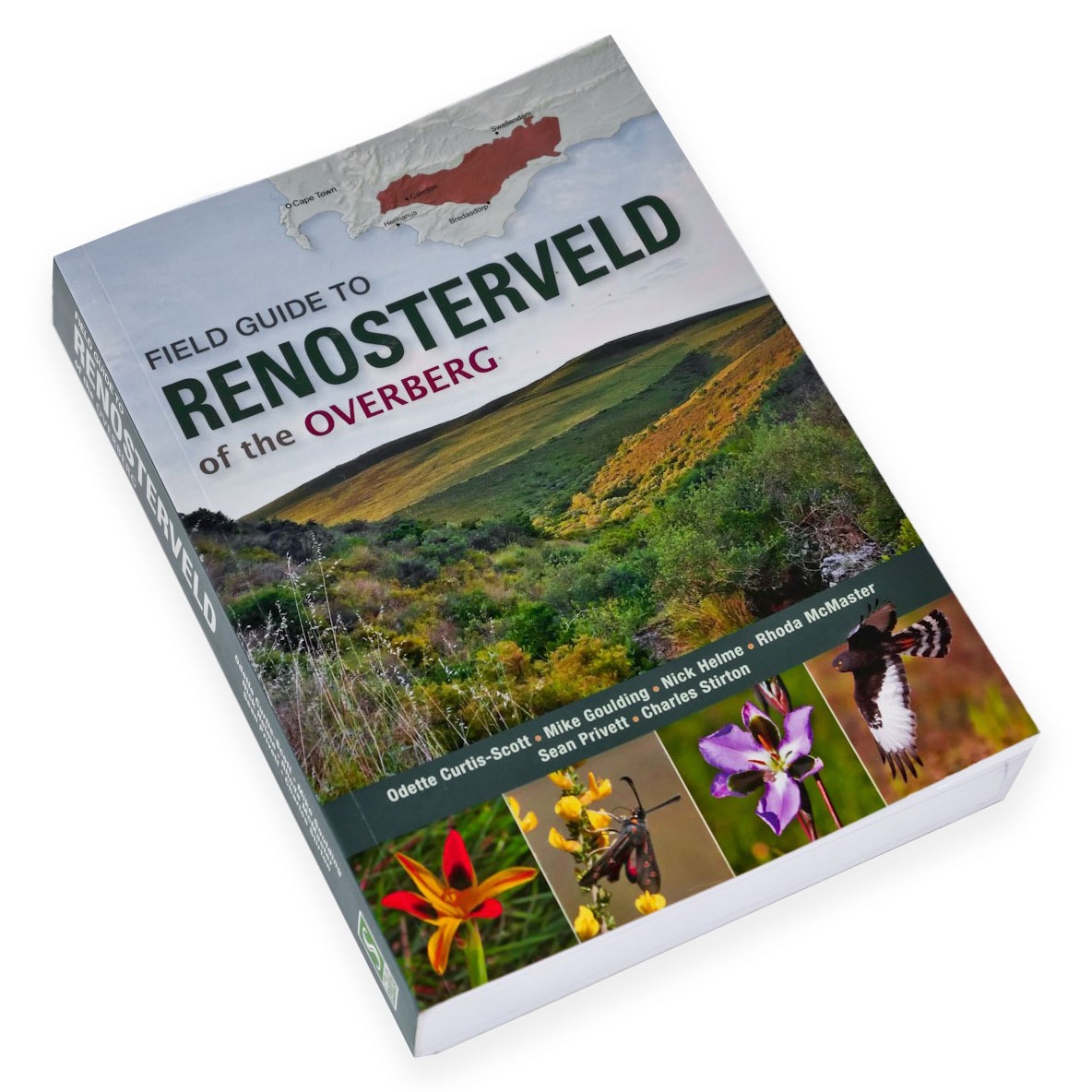Ferns are known from our cool damp forests, where water and shade are abundant. They’re certainly not as well-known as members of the Renosterveld family.
Above: Cheilanthes capensis
Still, five Renosterveld species form part of the Pteridophytes group: A group which includes Ferns and other ‘Cryptogams’ (plants which do not make flowers or seeds, but instead use spores to disperse, thus they have a cryptic form of reproduction). Most of these species rely on our winter rains in Overberg Renosterveld in order to recover following the long and dry summers here.
So as winter approaches (following these huge downpours we’ve just experienced in the Overberg) and you head into Renosterveld, here are the ferns to look out for, as captured in the ‘Field Guide to Renosterveld of the Overberg’.
Above: Mohria caffrorum
- Scented Fern or Brandbossie (Mohria caffrorum)
You’ll find the Scented fern among rock crevices and on rocky hillsides, where they prefer shade or damp areas. While they’re endemic to South Africa, occurring from the Bokkeveld Mountains to Cape Peninsula and the Eastern Cape at areas below 500m, they’re not threatened. In past centuries, they were used to treat burn wounds by combining the leaves with fat.
Above: Ophioglossum nudicaule
- Slender Adder’s-tongue Fern (Ophioglossum nudicaule)
You’ll only find this species in the Cape Province, from Clanwilliam to Cape Peninsula, and the Overberg to Oudtshoorn. Generally, you’ll find them in seasonally moist sand and clay soils on mountain slopes and flats – usually in areas of deep shade. The unusual name stems from spore-bearing stalk, which may resemble a snake’s tongue. And look out for this fertile spike which is produced in winter, usually July.
Above: Cheilanthes capensis
- Lip Fern (Cheilanthes capensis)
Despite the name (capensis means ‘of the Cape’), this Lip fern occurs throughout the drier areas of South Africa, and in some instances in southern parts of Namibia. You usually find them in rock crevices and under rock ledges. Following the dry summer we experienced, the Lip fern may have looked to be dying down – but following the wonderful recent downpours in the Overberg, it is likely already rejuvenated.
Above: Cheilanthes hastata
- Hardlip Fern (Cheilanthes hastata)
The Hardlip fern chooses to shelter from the sun by growing under rocks and bushes. It occurs from Namibia, all along the coast to George. Hastata is translated as ‘spear-shaped’, which refers to the shape of the pinnae (or the leaf of the fern). This species is dormant in summer, also awaiting the winter rains to once again come back to life.
Above: Schizaea pectinata
- Toothbrush Fern (Schizaea pectinata)
This species is also known as the Curly Grass Fern, with its comb-like fertile tips (pectinus refers to a ‘comb’). It’s found on the lower slopes from Clanwilliam, southwards to the coast and eastwards along the coast, as well as in East Africa and Madagascar. But while it’s a common sighting, it’s rarely abundant. The combs remain all year, but become brown and harden before decaying and giving way to new green growth.
Additional sources:
-
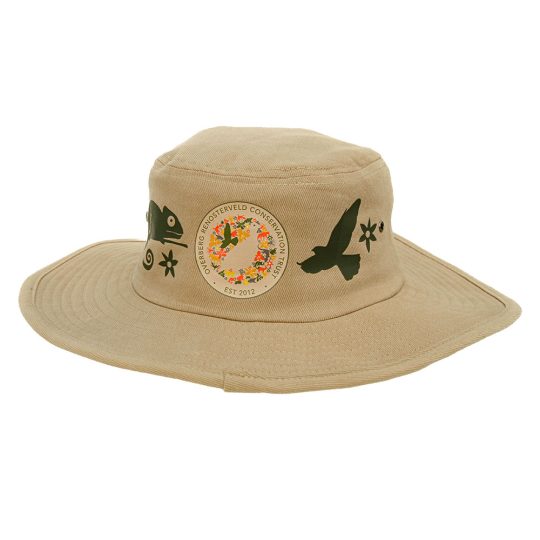
Hats
R300.00
This information is sourced from the Field Guide to Renosterveld of the Overberg, written by Odette Curtis-Scott, Mike Goulding, Nick Helme, Rhoda McMaster, Sean Privett and Charles Stirton.
This is the first guide to Renosterveld in the Overberg written, and includes 980 plant species and 140 animals you’ll find in this habitat.

